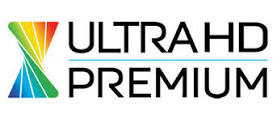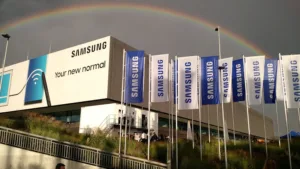I had a feeling that the education and selling of consumers on the idea of HDR/WCG TVs was going to be problematic. After seeing what the major TV brands are saying about their TV products at IFA, it seems inevitable that confusion will reign.

It’s going to be ‘alphabet soup’: HDR, PQ, HLG, Dolby Vision, HDR10, HDR10+, HDR400, HDR2000, wide color gamut, quantum dots, QLED, DCI-P3, BT.2020, color volume, static metadata, dynamic metadata – not to mention all the brand-specific names TV makers will be tempted to attach to these terms. Professionals in the industry can get confused by these terms – so I pity the poor consumer.
Making matters worse will be the wide variety of performance levels in these TV sets. Many sets will be labeled HDR and WCG, but the performance can and will vary all over the map.
The UHD Premium logo will help, but there are two levels of performance – one for LCDs and one for OLEDs. And, the badge will only apply to a small percentage of TVs. For non-certified TVs, it is going to be a nightmare to figure out what the performance actually is.
UHD Premium logo will help, but there are two levels of performance – one for LCDs and one for OLEDs. And, the badge will only apply to a small percentage of TVs. For non-certified TVs, it is going to be a nightmare to figure out what the performance actually is.
At IFA, I talked to all the major brands about their HDR/WCG TVs. Remember, IFA is also a consumer-facing show with lots of ordinary consumers there to look at the latest tech, including TVs. In other words, the TV makers are talking to consumers and I was totally unimpressed with the way they were doing it.
Few booth personnel could answer performance questions. Marketing brochures were not much help either. Often booth staff, name plates and datasheets would list “HDR” and “WCG”. As most readers know, this says very little about the capabilities of the TV. For example, what HDR flavors does the TV decode? HDR10?, HLG?, Dolby Vision? HDR10+? You need to know this if you are going to hunt for HDR content and expect it to play on your TV.
Hardly anywhere is the peak luminance of the set mentioned. There is a big difference between a set that boasts 2000 cd/m² of peak luminance and one that has 400 cd/m². Yet this information is nearly impossible to find out. As it turns out, many of the TV brands at IFA will offer a lot of TVs labeled HDR. What it seems to mean is that they will decode HDR10, maybe HLG and, more often than not, peak luminance will be just 300-400 cd/m².Is there a pot of gold over the HDR/WCG rainbow at IFA?
It is a checkbox approach to say that the TV has HDR, but the image quality may not be that much different from an SDR TV. It will depend on how well the electronics in the TV tone map the HDR signal down to this luminance range. So while it will increase the penetration of HDR into the TV market, it may do a disservice in advancing the cause of HDR, as the image quality may just look ‘ho-hum’ on many of these sets compared to SDR TVs.
Terms like HDR400 and HDR2000 are coming into play to denote the luminance level the HDR processing on that TV supports. That is helpful on one hand, but may add more confusion on the other. It does not answer the question of which flavor of HDR it can decode.
Wide Colour Gamut will be Abused
The wide color gamut (WCG) term is also going to be abused. This label will be affixed to TVs that have a color gamut of more than BT.709. TV models that have a wider color gamut seem to be more inclined to publish the result as in X% of DCI-P3. Models that have a smaller color gamut may just get the WCG label. But there is no consistency. Why can’t the brands just state the % of DCI-P3 coverage by area for better comparison?
How one obtains a wide color gamut may or may not be discussed as well. Quantum dot providers seem eager to reveal that this is the way they get a wide color gamut. Others don’t seem to discuss the other methods like a yellow notch filter, adding a red phosphor to YAG or just using green and red phosphors on a blue LED. Or, the approaches are couched in trade names like NanoCell (a yellow notch filter approach). I am not sure the average consumer wants or needs to know how his wide color gamut display generates those colors, but I suspect there will be more trade names to add to the confusion.
Color volume is also going to be promoted on LCD displays. This can be explained to consumers in fairly simple terms as the range of colors over all the light levels of the display. However, there is no agreed upon metrology standard for HDR color volume, so it is ripe for exploitation as well.
I don’t have any simple answers to these complex issues other than to advocate for more transparency in measurements and spec sheets and lots more consumer education on all this stuff. That’s a big ask, however. (CC)

